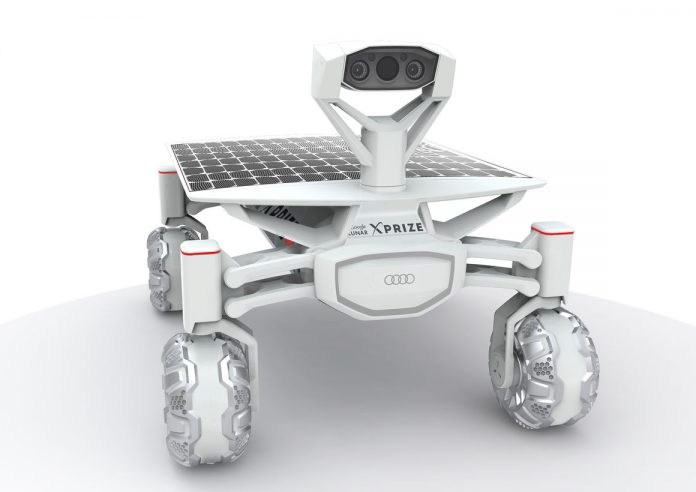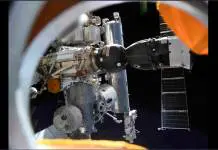
Germany – Audi (NASDAQ: AUDVF) announced the company’s plans to send an unmanned rover to the moon by late 2017, the Lunar Quattro. The company wants its 3D-printed rover to explore the same place the last humans explored on the lunar surface, back in 1972.
After nearly two years of planning, the German automaker entered the Google Lunar XPRIZE competition to transport a vehicle to the satellite, where it will travel a third mile and capture video and images along the way.
The name of the prototype vehicle is Lunar Quattro. The company has signed a partnership with Berlin-based group Part Time Scientist to launch with Spaceflight Inc. by the end of the coming year.
The 3D-printed Audio Lunar Quattro is ready for the Moon
Audi unveiled the Lunar Quattro earlier this year, and it is almost ready to go. The company developed the machine with 3D printing technologies, and the Quattro is made of 3D printed titanium and high-strength aluminum structure.
Audi has done extensive tests to its lunar rover over the past year, and its engineers have improved the vehicle’s all-wheel-drive power distribution and cut 18 pounds from its original weight of 84 lb. The car’s power comes from a tilting solar panel, while a lithium-ion battery powers its four wheel-mounted motors.
Its main feature is Audi’s Quattro technology, its top-notch all-wheel-drive technology that currently roles on the brand Audi AG. Additionally, Lunar Quattro also has a 360-degree wheel rotation.
Audi will continue testing two Lunar Quattro Rovers and run simulations of the entire missions in the Middle East in the coming months.
The brand hopes both the testing and the possible exploration of the Moon will show them how some components endure in extreme conditions, according to Michael Schöffmann, coordinator for Lunar Quattro and head of transmission development.
Part-Time Scientist group developed 3D-printed Lunar Quattro as part of the Google Lunar XPRIZE competition
The Lunar XPRIZE launched in 2007. It invites engineers and scientist all over the world to develop land rovers for the moon.
The competitions require participants to land a rover on the moon’s surface, drive 500 meters and send high-resolution photos back to Earth. The winner will receive a reward of $30 million.
Audi and Part-Time Scientist are closer than ever to reaching the goal with a straightforward and unmanned economic rover. However, about sixteen teams are participating in XPRIZE, including SpaceL from Israel, Moon Express from the U.S., and the international startup Synergy Moon.
Source: Mission to the Moon











